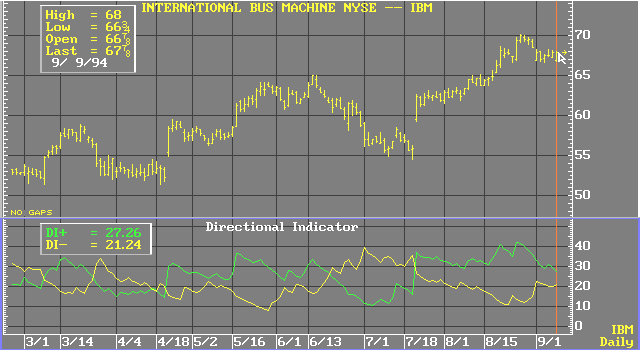Directional Movement Index (DMI)
The directional movement index was developed by J. Welles Wilder for identifying whether a market is in trend mode. In other words, the CCI helps identify whether there is a definable trend in a market, and in which direction that trend is moving.
Formula:
![]()
![]()
![]()
![]()
![]()
![]()
Where:
+DI = current positive directional index
-DI = current negative directional index
+DMn = current modified moving average of +DM
+DM = current positive directional movement value
Ht = current high
Ht-1 = previous high
TRn = current modified moving average of the true range
TR = true range
T
h = greater of today’s high and the previous priceT
l = lessor of today’s low or the previous priceWilder defines +DI as the percentage of the true range that is up. -DI is the percentage of the true range that is down. According to Wilder, when the +DI value is greater than the -DI, a long position is indicated. Conversely, when the -DI is greater than +DI, a short position is indicated. The DMI can be used alone or with the Average Directional Movement Index (ADX). For more information on ADX, see
Average Directional Movement Index.
see, J. Welles Wilder Jr., New Concepts in Technical Trading Systems, McLeansville, NC: Trend Research, 1978, pp. 35-52.
See also:Directional Movement Index Function